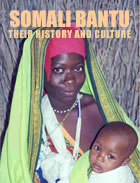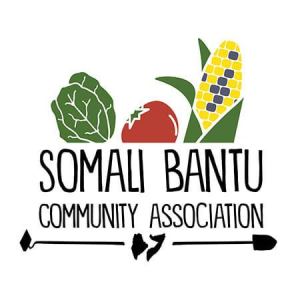The Somali Bantu
Throughout 2004, I had the opportunity to play a part in the resettlement of the Somali Bantu in Atlanta. The Somali Bantu are a group of refugees from Somalia who fled the chaos of the civil war there in 1992. The Bantu were the rural underclass of Somalia and thus lacked the social and financial ties to secure any safe haven within the country during the war Their farms were confiscated by bandits, many of their family members were killed without cause, and they were left without security for the future. After over a decade in the sparse and hazardous conditions of the refugees camps in Kenya to which they had fled, the Somali Bantu finally found a new home and a hope for the future here in the United States. This page gives resources and information about their experiences.
Visit my photolog:
The Somali Bantu in Atlanta: Pictures from the Resettlement Experience
History & culture:
The Somali Bantu are actually a diverse group of peoples whose ancestors share a common history of being brought as slaves from neighboring regions in the south of Africa. Having maintained much of their distinct physical and cultural characteristics, they remained a separate group, facing a good deal of discrimination and poverty. Some served as laborers in the larger cities, taking on crude and unwanted tasks. Many, however, were simply rural farmers—living simple lives on the land without access to education or political voice. Most had never used or even seen electricity or indoor plumbing.
The collapse of the Somali government into a civil war of clans and warlords left the minority group in quite a defenseless position. Groups on all sides took advantage of the fact that the Somali Bantu had no affiliated clan protection as a chance to seize land and property. Many Bantu tell stories of seeing parents shot in front of them, of separation from family and friends, and sad treks across the desert land. Most of the able population fled to refugee camps that were springing up in the harsh desert environment of neighboring northern Kenya in 1992.
Like other refugees in the camp, the Somali Bantu lived in small mud-brink tin-roof homes in the middle of a desert environment. Some discrimination continued in the camp and, without resources and connections, the group faced shortages of food and lack of security leading to malnutrition and years of hopelessness. While other groups found durable solutions in the following years, there seemed to be little that could be done the large and under-educated Somali Bantu population.

You can find more information about Somali Bantu history and culture in this guide published by the Center for Applied Linguistics:
Somali Bantu Cultural Orientation Resource
Realizing that the Somali Bantu could not safely return to their homeland, the international refugee organizations attempted to find places in Africa where they might go and live a life like the one they had known. Disasters in neighboring countries prevented this, however, and it was eventually decided to open up the US refugee program to this group—with the realization that their rural background would pose serious challenges for their resettlement.
Resettlement experiences:
The rural background of the Somali Bantu meant that their transition to life in the United States would be particularly difficult. Imagine arriving in an American apartment having never used electricity, plumbing, or even doors! The Somali Bantu had a lot to learn about America—and began doing so in cultural orientation training before ever setting foot in the city.
Beginning in 2003, the Somali Bantu started arriving to the United States. Upon their arrival, relief agencies like World Relief were poised to help them face the challenge of life in America. I have written a short narrative about the special program of cultural orientation that the refugee agencies of Atlanta developed to address these needs which was published in Refugee Reports. On the part of World Relief, I helped to develop a curriculum of Practical Skills (money, bills, address, telephone, time) and Community (stores, hospital, bank, etc.) orientations that offered some important background for newly arriving Somali Bantu refugees. We found their response to these classes to be very positive; for the most part, they seemed eager to learn and gain as much information as possible.
Not only did the Somali Bantu respond well in classes and with their caseworkers, but they also helped within their own community—sharing the information and experiences that they gained with one another. This proved to be a key aspect of their resettlement process. We were fortunate enough to have several large apartment complexes where we could place the Somali Bantu as a group which allowed them to maintain many aspects of their community relationships.

For additional information as well as more recent news of the Somali Bantu and their ongoing integration into American society, you can find resources on the Somali Bantu Community Association in Maine
Somali Bantu Stories:
While the Somali Bantu resettled in cities throughout the United States, the Atlanta area eventually received the largest number of new families throughout 2004 and 2005 and thus had many interesting and exciting programs and experiences. Some of these were captured in articles and documentaries at the time. The Atlanta Journal-Constitution printed several articles about the Somali Bantu including a feature about some of our families and their first week of transition. They also looked at some of the difficulties faced by families after a few months. Also a well-known filmmaker followed some our families over a longer period and developed a documentary called Rain in a Dry Land.
You can find a link to the documetary as well as reprints of the AJC articles here.